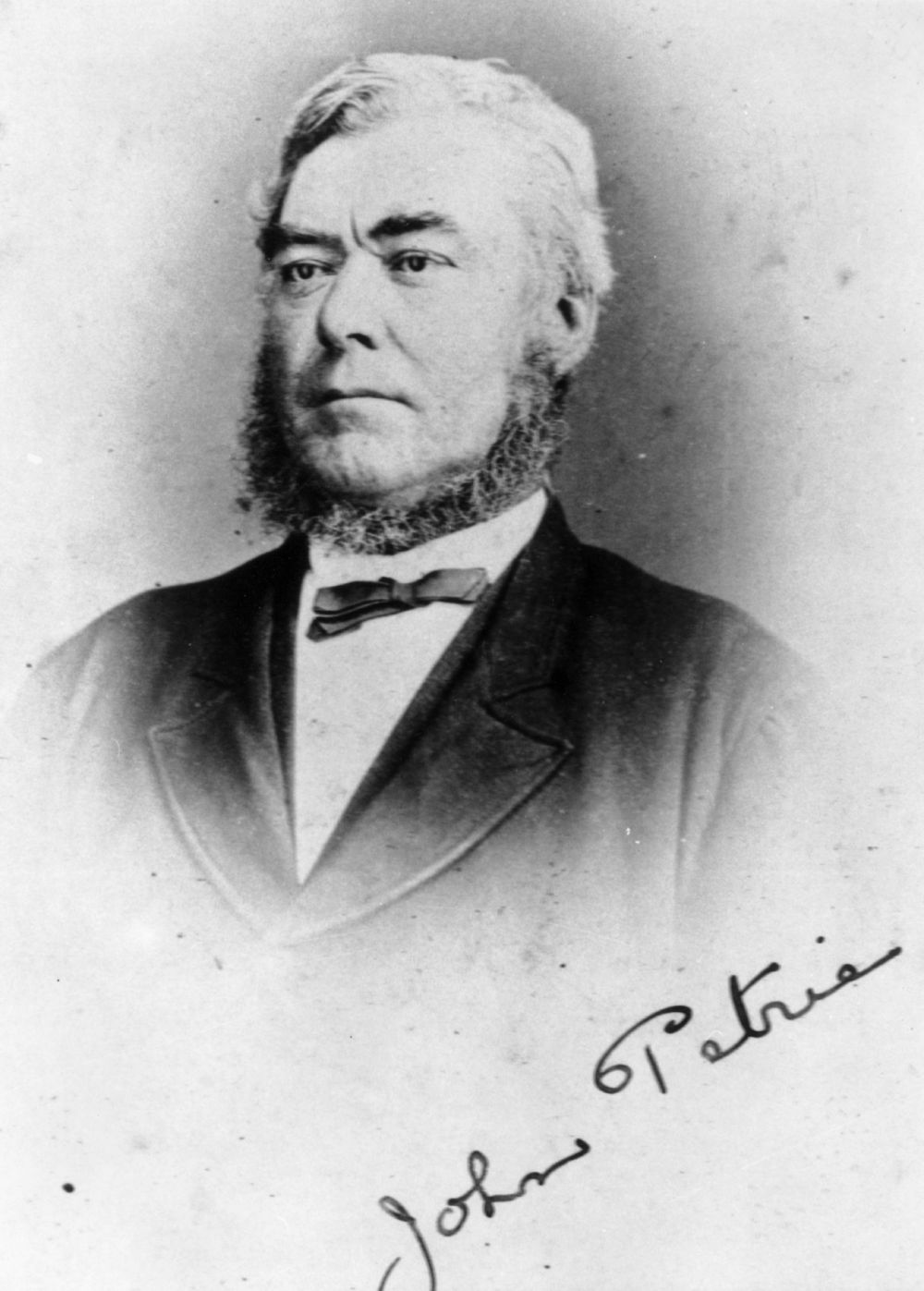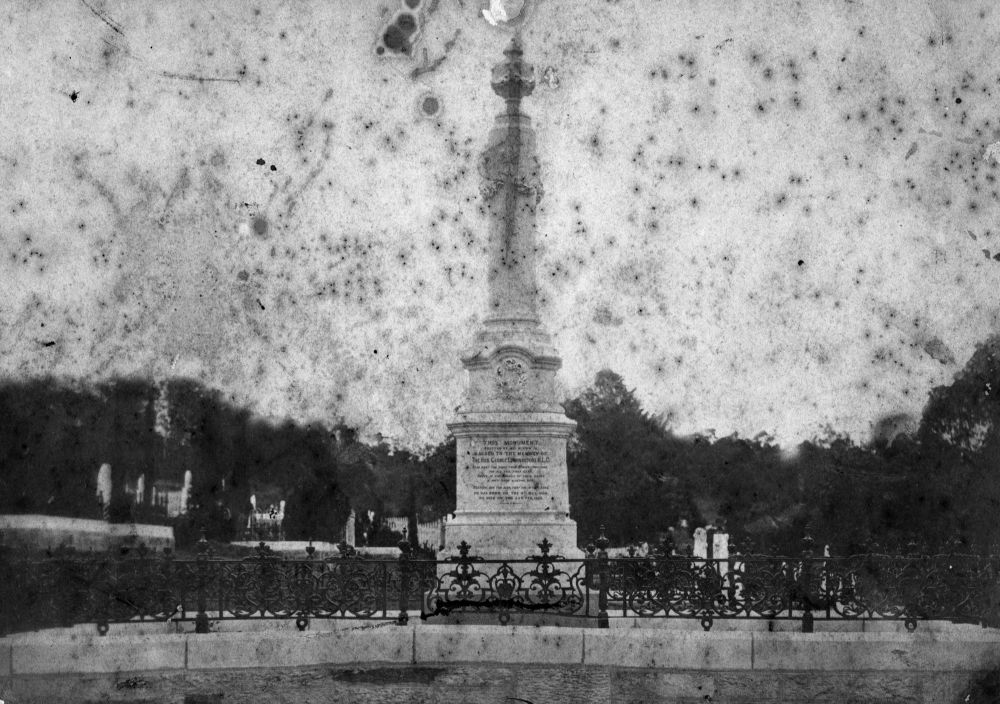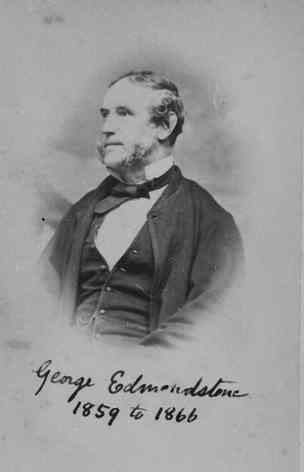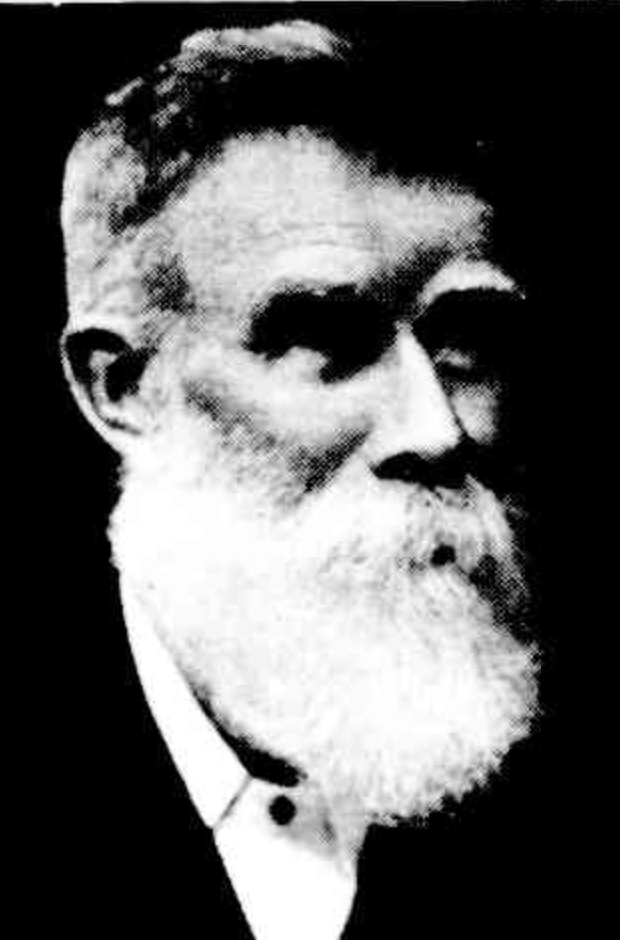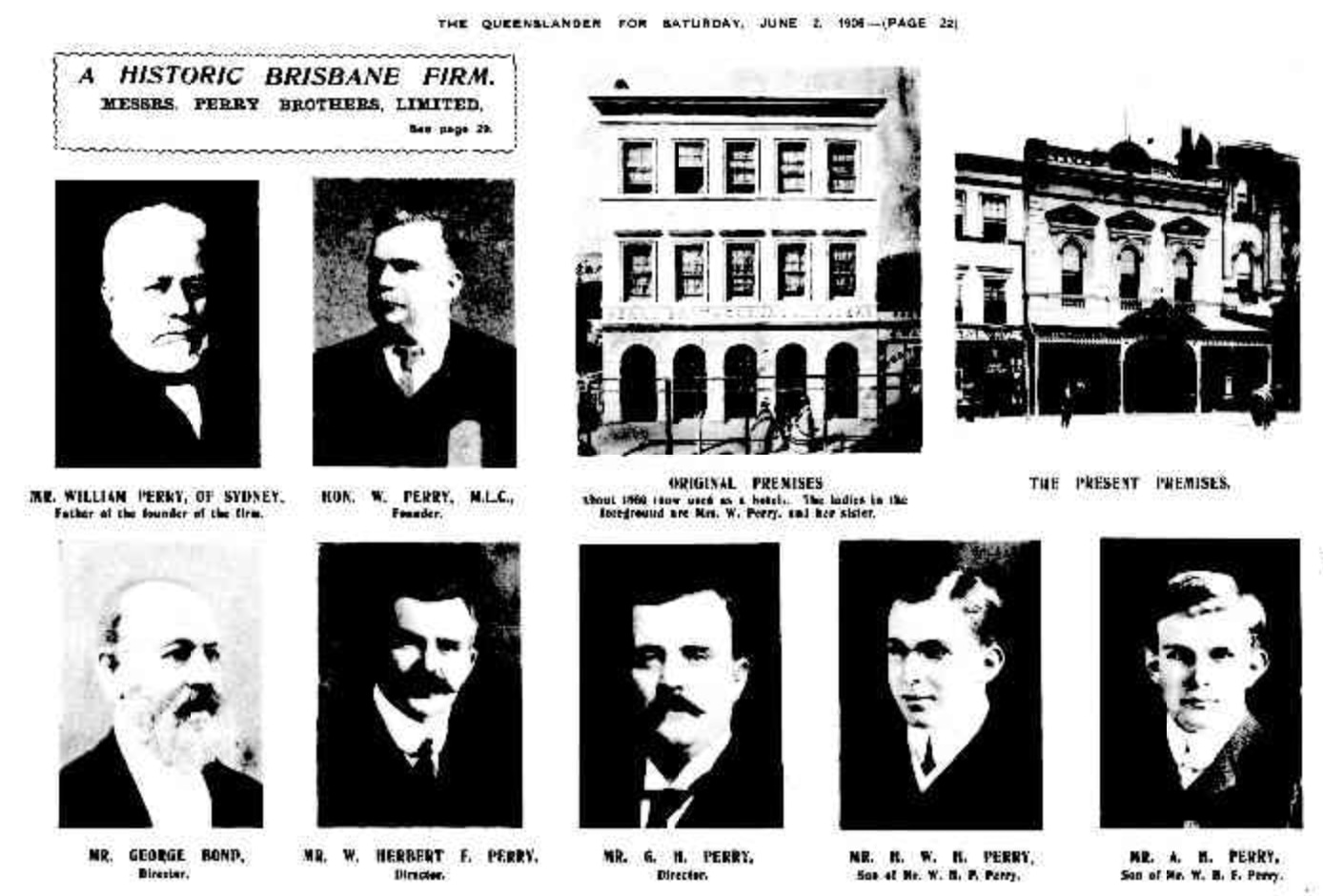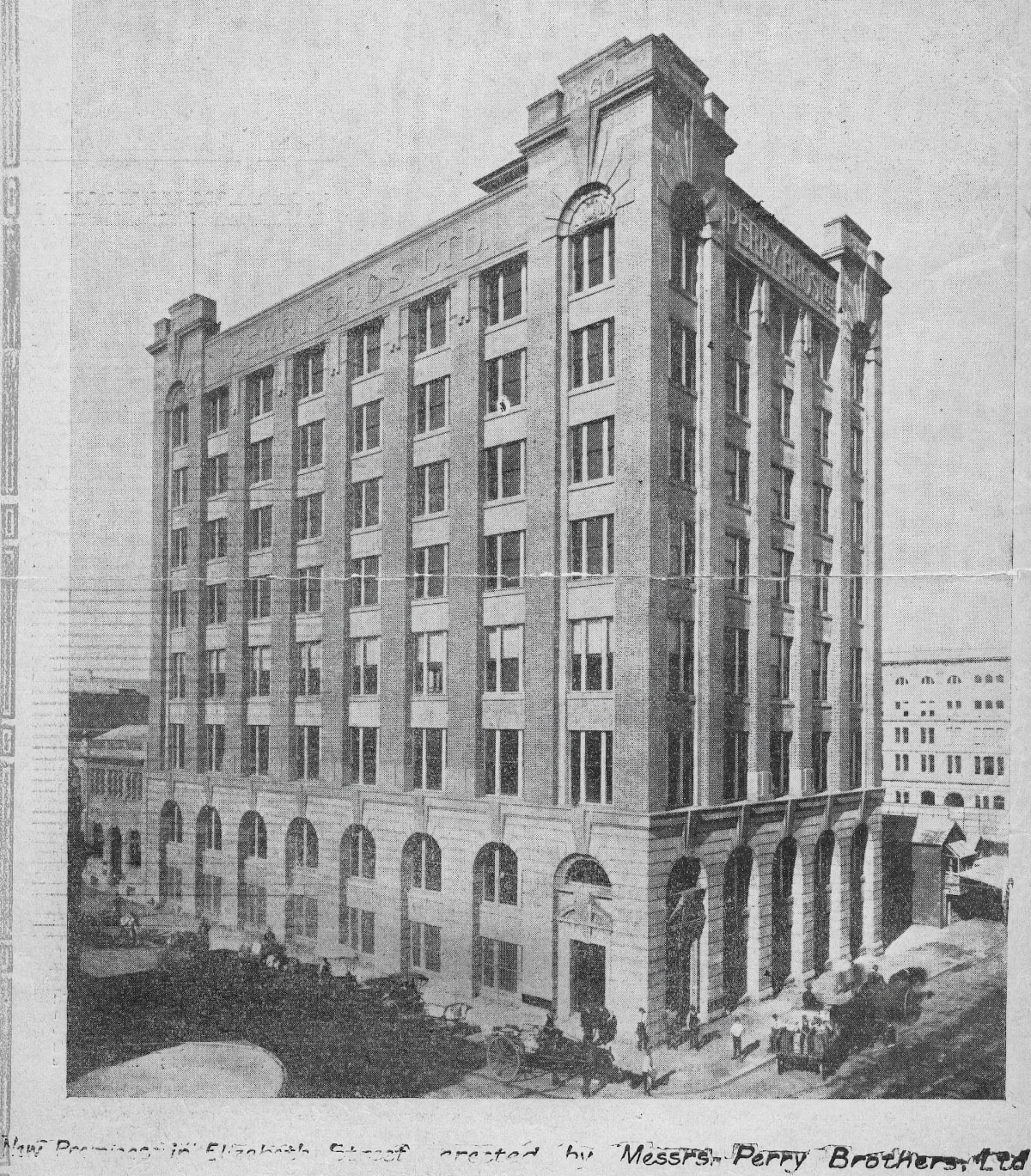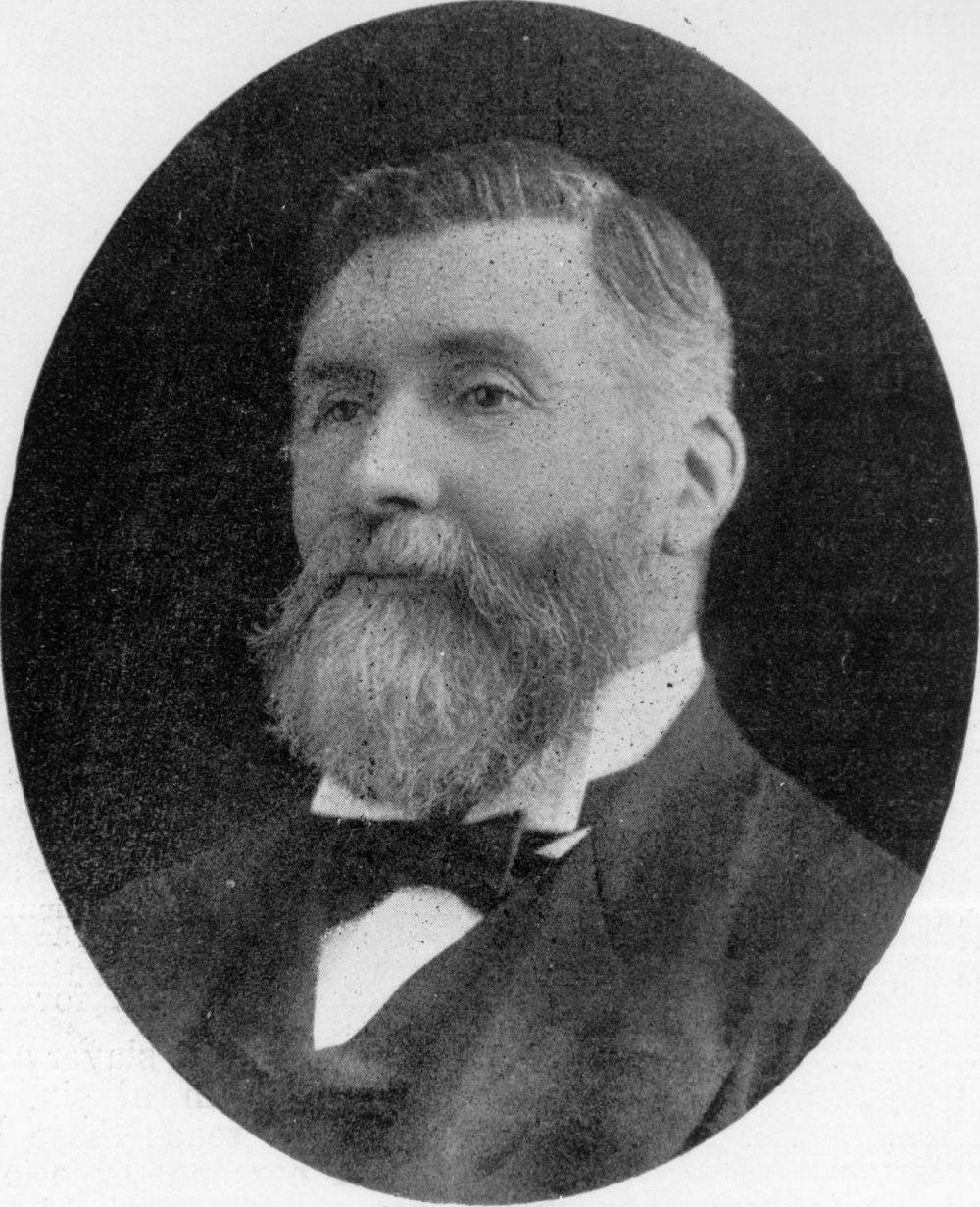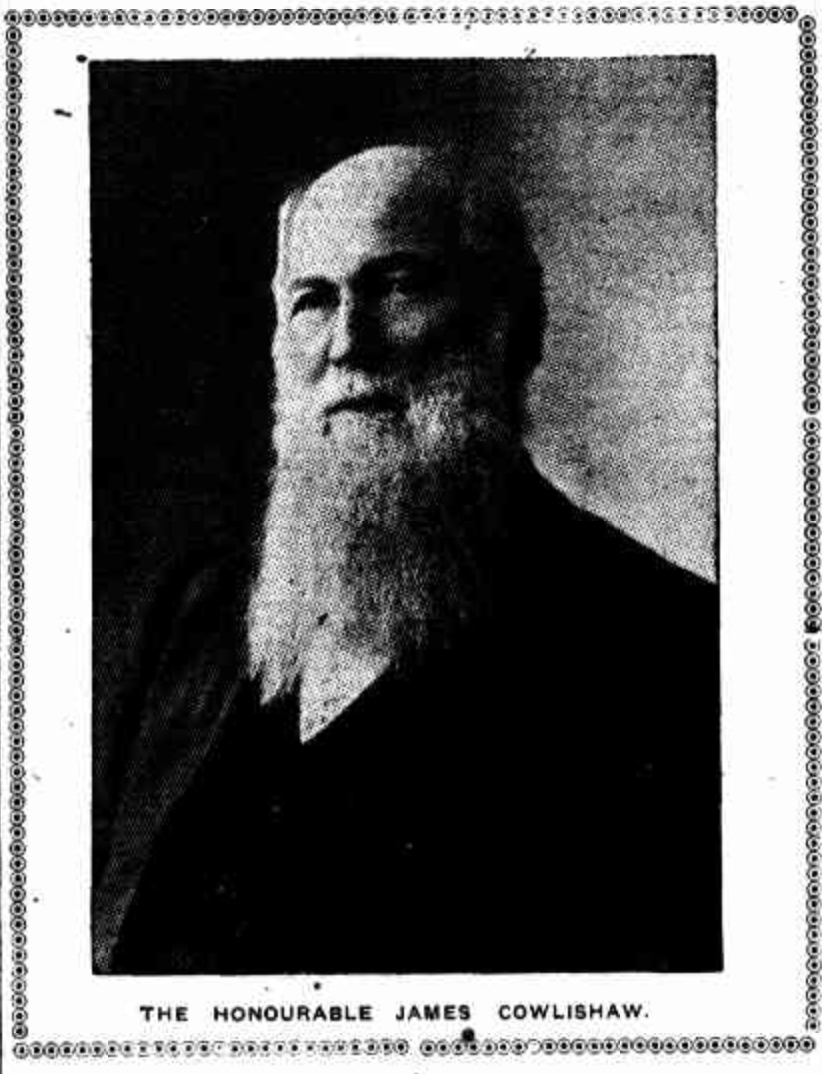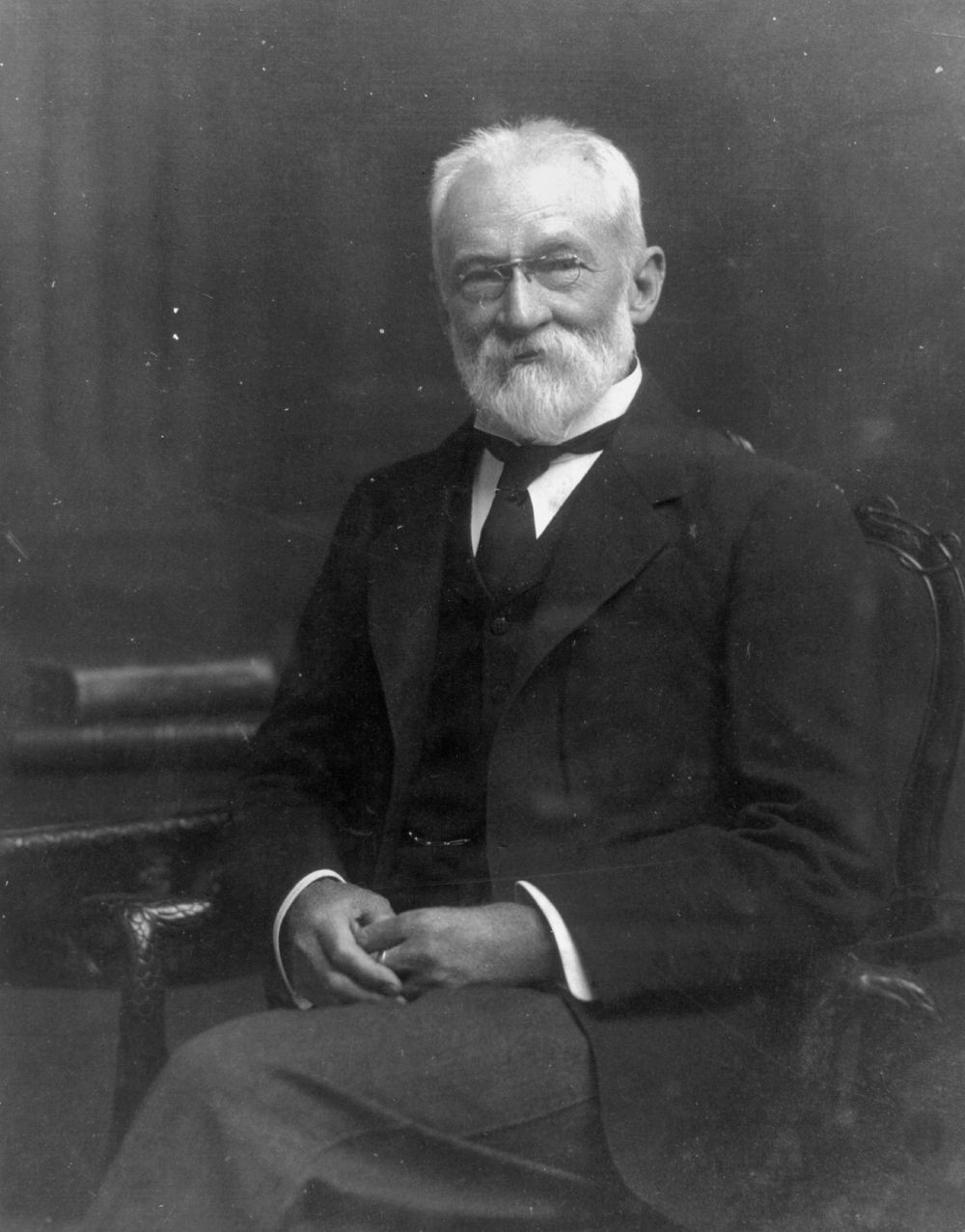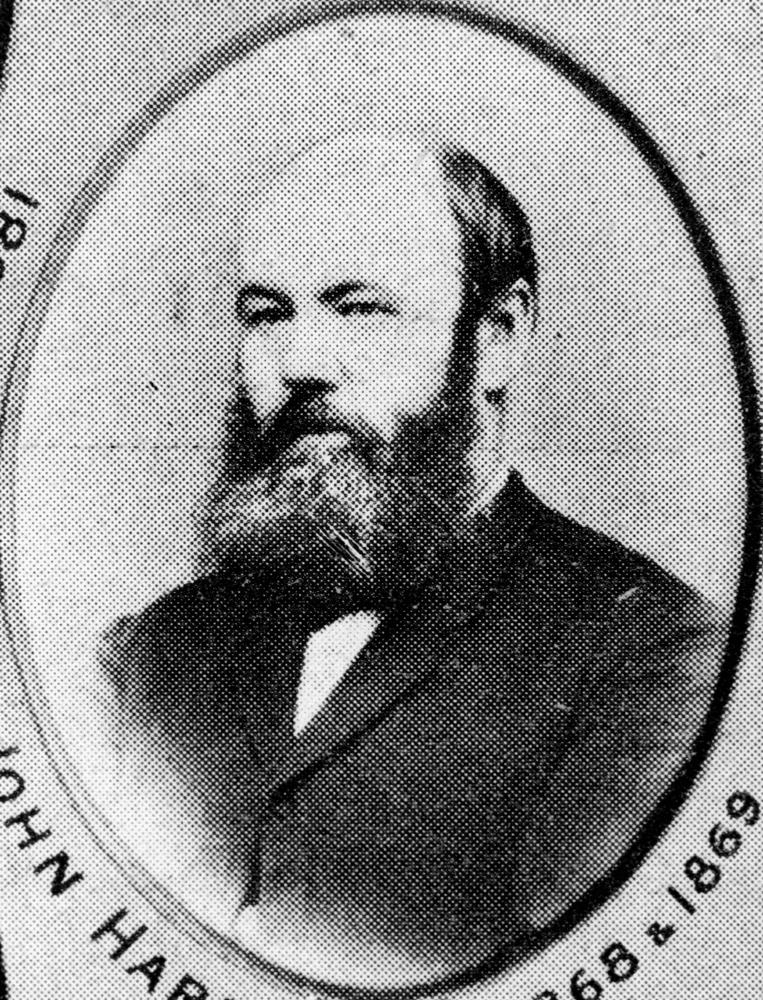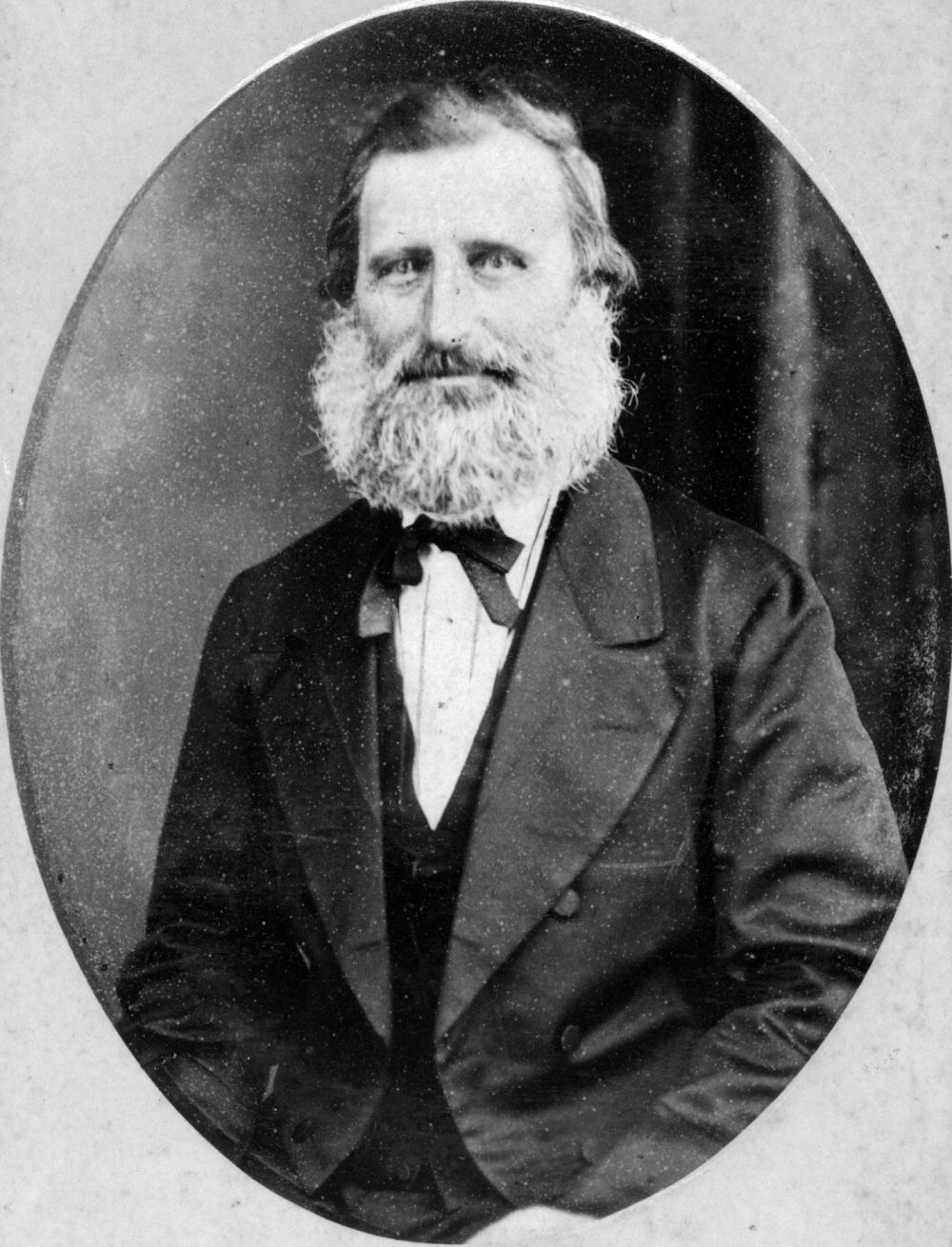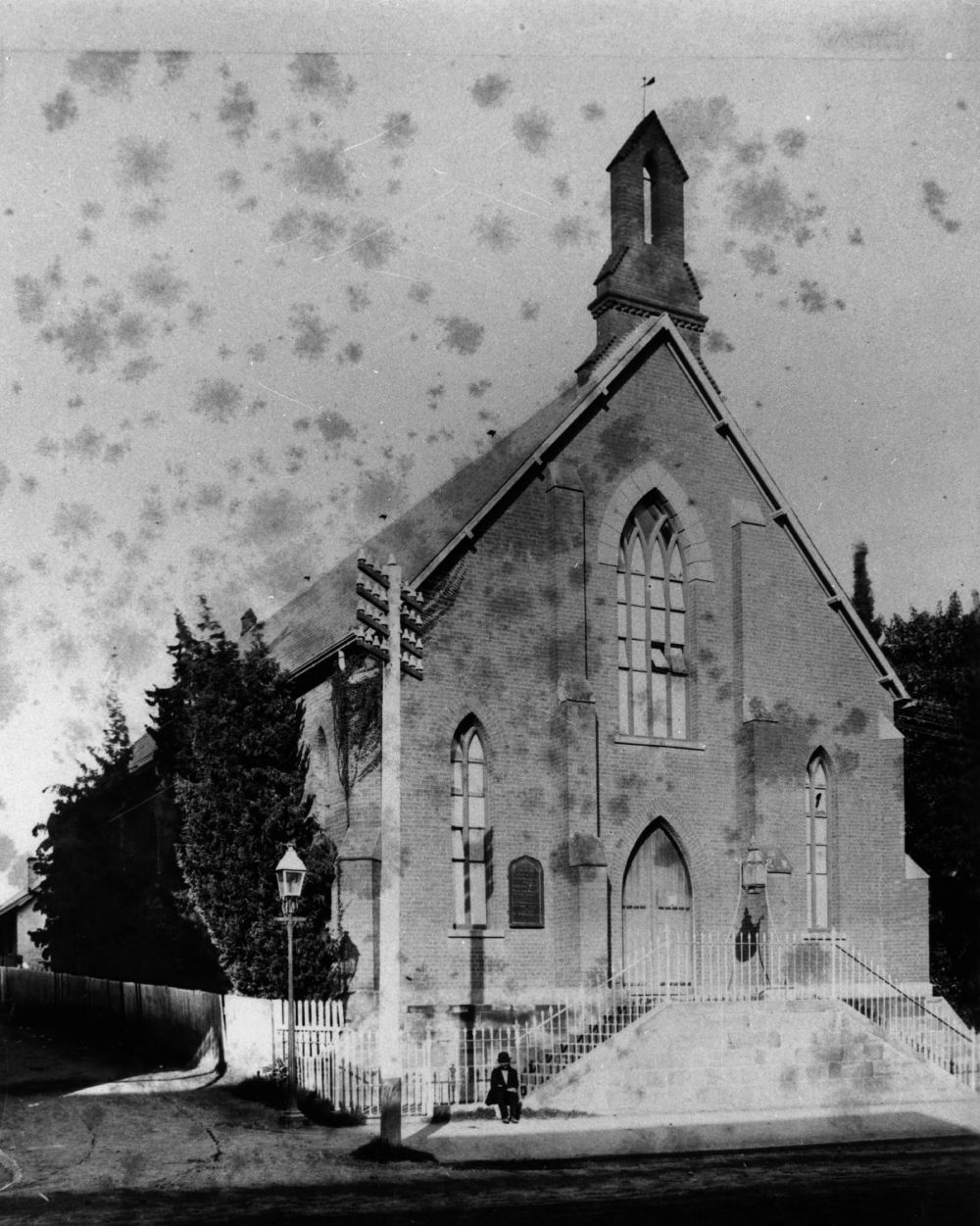Founding Fathers
The first Brisbane General Cemetery Trustees.
The Brisbane General Cemetery Trust commenced when the first Trustees were appointed on 7 October 1870. They were John Petrie (Chairman), John Hardgrave, William Pettigrew, George Edmonstone, Alexander Raff, James Cowlishaw, Michael Quinlan, Nathaniel Lade, William Perry, and Samuel Walker Griffith.
The Trust’s first secretary was Arthur Rawlin, 1 October 1870 to 1 July 1875. He was followed by Henry J. Oxley, 1 July 1875 to 30 July 1916 (41 years). E. Griffith Oxley was acting secretary from 11 March 1907 and appointed 19 September 1910 until the dissolution of the Trust.
On 1 August 1930, Toowong Cemetery and all others with the Brisbane City Council municipality were placed under the management and control of the Council.
Use the Toowong Cemetery map to help you visit the graves in this story. Click the grave location (portion‑section‑grave) beside each person's name to view an aerial image of the grave.
John Petrie (13‑5‑3)
John Petrie was born on 15 January 1822 at Edinburgh, eldest son of Andrew Petrie and his wife Mary, née Cuthbertson. He arrived in Sydney with his family in 1831 and was educated at Reverend John Dunmore Lang's school. In 1837, he arrived aboard the James Watt, the first steamer to enter Moreton Bay, where his father had been appointed clerk of works, and accompanied him on explorations to the Bunya Mountains and Maroochy River. The family stayed on in the Moreton Bay District after the penal settlement closed. After learning the ropes in the family building and contracting business John assumed responsibility for its management after his father's blindness in 1848 forced him to retire. John became sole proprietor and the firm was changed from Petrie & Son to John Petrie.
On 5 September 1850 Petrie married Jane Keith, daughter of Daniel McNaught of Dunbarton, Scotland. The family grew to five sons and five daughters. John Petrie was public‑spirited and held many important offices. He topped the poll in Brisbane's first municipal election in 1859 and was mayor three times by 1862 and served as an alderman until 1867. He was also an active member of the first Masonic lodge in Queensland. A staunch Presbyterian, he was an elder and worked on building St Paul's Church. John Petrie died on 8 December 1892.
Signed photograph of John Petrie — State Library of Queensland.
George Edmondstone (13‑20‑5)
George Edmondstone was born in Edinburgh, Scotland, on 4 May 1809 son of William Edmondstone and Alexandrina Farquhar. In 1832, he arrived in New South Wales and had businesses in Sydney and Maitland. On 10 July 1837 in Sydney he married Alexis Watson Tilleray. In 1840 he purchased Normanby Plains Station in Queensland. He sold this in 1842 and was one of the early free settlers in Brisbane, working as a butcher. He was an alderman in Brisbane 1859-66 and the mayor 1863-64. In the Queensland Legislative Assembly he represented East Moreton in 1860-67, Brisbane in 1869-73 and Wickham in 1873-77. He retired from business because of a heart complaint and died at his home in Breakfast Creek on 23 February 1883.
Monument erected to the memory of George Edmondstone. Died 23 February 1883. His widow Mrs Alexa Edmondstone, who died in Brisbane in 1887, is also buried there. — State Library of Queensland.
Alderman George Edmonstone — Brisbane City Council.
John Melville (9‑10‑14)
John Melville was born at Boreham Wood, Hertfordshire, England on 10 September 1834 and in 1848 came with his parents to Moreton Bay in January 1849 aboard the Fortitude. In 1851 when the gold diggings broke out in Victoria, John Melville went, to try his luck but returned to Brisbane at Christmas 1854 to visit his family. He then met the Augustus Charles Gregory and was asked to join his Great Northern exploration party for the purpose of exploring the Victoria and Albert Rivers, an invitation which he accepted. They left Brisbane in August 1855. He was the last surviving member of this expedition.
After returning from the expedition John Melville was engaged in survey work until 1871 when he acted as chainman to George Phillips, who had been engaged to survey part of the Toowong cemetery and in 1873 he was appointed overseer of the cemetery, the position he held for 38 years. He died aged 77 on 8 March 1912.
The Late Mr. John Melville - The Queenslander, 6 Apr 1912
William Perry (13‑70‑1)
William Perry was one of Brisbane's earliest businessmen. He arrived in Brisbane in June 1860 and had set up a hardware store in Queen St by August of that year. He was joined in business by his brothers George and Frederick. The business thrived, and further flourished under William's sons, Herbert and George.
Perry Brothers Limited - The Queenslander, 2 June 1906
During 1911 to 1913, Herbert and George highlighted their business by building Brisbane's then tallest building, the eight storey Perry House on the corner of Elizabeth and Albert Streets in the city.
Perry Brothers premises in Elizabeth Street, Brisbane, Queensland, 1913 - State Library of Queensland
William entered Queensland politics, becoming a member of the Queensland Legislative Council on 22 September 1890. He died from heart failure at his home, Folkestone, Breakfast Creek Road, on 11 June 1891. A large concourse, including many politicians, attended the funeral at Toowong Cemetery the next day.
Alexander Raff (13‑79‑1)
Alexander Raff was born in Forres, Elginshire, Scotland in July 1820, the third son of James and Margaret Raff. Alexander arrived in New South Wales in 1845, following his eldest brother, George who had arrived in 1841. After first settling in Victoria pursuing pastoral interests, Alexander arrived in Brisbane, aboard the schooner Souvenir on 9 April 1851.
Alexander was an active member of various organisations and societies, including the School of Arts, the Queensland Horticultural and Agricultural Society and the Queensland Philosophical Society. Raff was the first president of the Young Men's Christian Association in Queensland and, later, the men's steering committee for the Children's Hospital established in 1878. Alexander continued his pastoral interests in Queensland, on his property, Logie Plains on the Darling Downs. For many years from the 1880s Alexander Raff was a partner of Smellie and Co. In August 1884 Alexander Raff was appointed as a Member of the Legislative Council, a position he held until his resignation in June, 1910.
Raff married Elizabeth Millar Patterson, the elder daughter of a prominent Scottish medical family, in Sydney on 5 June 1862. The newly weds arrived in Brisbane aboard the Balclutha on 13 June 1862. Alexander and Elizabeth Raff had seven children, six of whom survived to adulthood. Raff was an elder in the Presbyterian Church. He died on 26 January 1914.
Alex Raff — State Library of Queensland.
James Cowlishaw (11‑41‑7A)
James Cowlishaw’s association with the Toowong Cemetery spanned 59 years from the inception of the trust. He was an architect, newspaper proprietor, director and politician. James was born on 19 December 1834 in Sydney, the eldest son of Thomas Cowlishaw, architect, and his wife Maria, née Evans. Educated at St James's Grammar School, Sydney, he tried a number of jobs before studying architecture. About 1860 Cowlishaw came to Brisbane where designed the Commercial Bank of Sydney in Queen Street, the Boys' Grammar School as well as important houses, such as Bishopsbourne. He designed a store for Alexander Raff's brother's company, George Raff and Co. in 1862 and two years later, additions to Raff's Wharf.
Cowlishaw was a director of the Brisbane Courier until 1873. He became managing director of the Brisbane Telegraph in 1878 and chairman of the Telegraph Newspaper Co. from December 1879 to May 1885. Cowlishaw was a member of the Legislative Council where he was member from 1878 to 1922. In the 1920s he was described as 'the last of the old Conservative Party'; he was implacably hostile to Federation, the Labor Party and 'anything that savoured of socialism'.
A firm Methodist, he was a practical supporter of his local church for many years. He gave unobtrusively to charity and was a member of the Advisory Committee of the Hospital for Sick Children, of which his wife was president for many years. He was a justice of the peace and sat on the bench of the Brisbane Police Court. He also helped to start Brisbane's first cricket club. In his last years he lived at his home, Montpellier, Bowen Hills, which he had completed to his own design in the 1860s. He died there on 25 July 1929 of heart failure aged 94, survived by three daughters and three sons. His wife Charlotte, née Owen, whom he had married at West Maitland about 1860, predeceased him, and has one of the cemetery’s most spectacular monuments. He left an estate worth £161,563.
James Cowlishaw - The Telegraph, 11 July 1928
Sir Samuel Walker Griffith (12‑11‑6/7)
Griffith was born in Merthyr Tydfil, Wales and migrated to Australia as a child. He graduated from Sydney University in 1862 with Honours in maths and classics and commenced practising law in Brisbane. Griffith, considered by many a Liberal, was elected to the Legislative Assembly in 1872. He was Attorney General and twice premier of Queensland. Griffith was a delegate at the Intercolonial Convention 1883. Subsequently, Griffith was Vice‑President of the National Australasian Convention of 1891 and Chairman of the Drafting Committee which prepared the draft constitution. Griffith was president of the Queensland Federation League from 1898. He was knighted in 1886.
In 1893 Griffith left government to become Chief Justice of Queensland and from 1903 to 1919 was the first Chief Justice of the High Court of Australia. During this period he translated Dante’s Divine Comedy from Italian, which was published by Oxford University Press in 1911. He died on 9 August 1920 at his grand home Merthyr which gave its name to a locality in New Farm. The funeral cortege was described by the Daily Mail as the largest ever seen in Brisbane.
Sir Samuel Walker Griffith in 1912-1913 — State Library of Queensland.
John Hardgrave (14‑22‑2/3)
John Hardgrave, a local politician and lord mayor of Brisbane, was born in Wicklow, Ireland, in 1826. He arrived in Sydney in 1843 and moved to Brisbane in 1848. In 1860 he purchased 6 acres (2.4 hectares) of land in the Brisbane suburb of West End. Hardgrave Road in West End is named after him. He was in the boot trade to 1862 and was involved in local government from 1867 to 1890. He was mayor of Brisbane in 1868 and 1870, first chairman of the Woolloongabba Divisional Board, alderman for South Brisbane from 1888 to 1890, and chairman of the Waterworks Board from 1893. He died in Brisbane on 8 November 1906 and was interred in the family grave.
John Hardgrave, early resident and mayor of Brisbane, 1868-1869 — State Library of Queensland. Cropped.
William Pettigrew (13‑66‑2)
William Pettigrew born on 26 August 1825 was the son of an Ayreshire farmer. He trained as a surveyor and as such arrived aboard the Fortitude in January 1849. He became a sawmiller, importing the first steam‑powered sawmill in 1853. Pettigrew was elected to the Brisbane Municipal Council three times in the period 1863 – 1881, including the mayoralty in 1870–1871. There is an overlap between his municipal duties and membership of the Queensland Legislative Council from 1877–1894.
He was a member of a number of societies; including the Queensland Philosophical Society, the School of Arts Committee (along with Samuel Walker Griffith) and was a life‑member of the Queensland Acclimatisation Society. He was also a land speculator.
His wife Amelia Boughay, a fellow Fortitude passenger whom he had married in 18 February 1859, pre‑deceased him on 1 September 1893 and is buried here. He died on 28 October 1906 and was interred in at Bowen. William Pettigrew was a strict Presbyterian, who kept the Sabbath sacred to the extent of walking to church and banning musical instruments from worship.
William Pettigrew, Brisbane, ca. 1875 — State Library of Queensland.
Nathaniel Lade (13‑52‑20/21)
Nathaniel Lade, a saddler by trade, was born in Hythe, Kent on 30 March 1835 and died on 17 July 1895 after a number of years of poor health. Together with his Cornish‑born wife Elizabeth Helen Bridges, he fathered at least fifteen children, six of whom died in childhood. He was an office‑bearer and Sunday School official at the Albert Street Wesleyan Church in its early days. Later he became an inaugural trustee the Coorparoo Methodist Church which opened in June 1886 on the corner Cavendish Road and York Street. The Sunday School opened a month later with Nathaniel Lade as Superintendent. By 1889, there were 139 attendees and fourteen teachers.
In the editorial written at the time of his death, Nathaniel was described as being 'amongst the oldest business men in Brisbane, and he was always held in the highest respect by his fellow citizens'. Although very civic‑minded, he never took an active part in politics. Lade Street in Coorparoo is named after him.
Wesleyan Church erected on the corner of Albert Street and Burnett Lane, in 1856 — State Library of Queensland.
Michael Quinlan
Michael Quinlan was born in Sydney ca. 1840 to parents Michael and Elizabeth (née Hampbell). He arrived in Queensland soon after Separation, where he was a manager of the large mercantile business of George Raff and Co. Later he commenced business in partnership with Mr. Donelly and when Donelly retired from the firm, the business carried on under the name of Quinlan and Co.
Following Michael Quinlan's death in July 1878, aged 38, his widow took control of the company and in August 1878 entered into partnership with George Wilkie Gray, the firm's principal manager, as Quinlan, Gray & Co. The Castlemaine Brewery and Quinlan, Gray & Co. Brisbane Ltd went on to manufacture Queensland's famous "XXXX" beer.
Acknowledgements
Originally written by Dr. Hilda Maclean. "William Perry" and "Michael Quinlan" stories added later.
Learn more
Discover all 34 Trustees of the Brisbane General Cemetery Trust.
